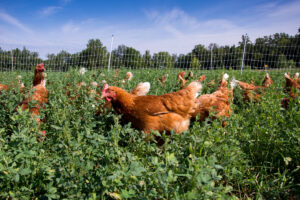Despite the Centers for Disease Control and Prevention’s warning about rodents, rodents are and have long been popular household pets. If you’re interested in getting a pet rodent, here is everything you need to know.
The Rodent Family
You have to remember there’s far more to Rodentia than the typical mouse or rat, both of which are beloved caged pets. The rodent world includes many “pocket pets,” including hamsters, gerbils, guinea pigs and more.
“Rodent” is from the Latin rodere or “to gnaw.” That reference derives from the species having a single pair of continuously growing incisors in the upper and lower jaws.
About 40 percent of all mammals belong to Rodentia. Indeed, some of these creatures are invasive and unwanted, but they’re native to every major landmass, excluding several oceanic islands, Antarctica and New Zealand. It’s believed the animals get around mostly through human activity.
Outside of extreme colds, rodents are as adaptable as humans, which is why many rodents seek human habitats. Nomadic by nature, a rodent settles into terrestrial environments that provide food, water and comfort. They are ecologically diverse and fall into pretty much every category of mammal.
- Arboreal: animals that love to live in and around trees
- Fossorial: creatures that spend a lot of time burrowing
- Saltatorial/richochetal: Critters that leap or hop
- Semiaquatic: Rodents comfortable with both land and water
Not all rodents make for sound household pets but a variety does. Here is a small list of the most common pet rodent species:
Most rodents are small with short limbs, robust bodies and long tails. Incisors are used to excavate burrows, gnaw food and deal with threats. In captivity, rodents have a variety of diets but most eat plant material or seeds.
Socially, these are pretty friendly animals. They live in all forms of societies and have a means for communicating that’s fairly complex. As pets, we keep rodents in suitable enclosures set up for comfort and social interaction. They have to be species-specific.
Tamed rats need lots of space and, despite a fearsome reputation, enjoy human companionship. Your large variety of guinea pig needs a big cage. The solitary and nocturnal hamster requires the same. Mice take up little space. The sociable gerbil likes humans and other gerbils and rarely bites.
If adopted at a young age, any rodent can be friendly, docile and not prone to biting.
Before Buying a Rodent
Rodents are interesting and exotic and do make for exceptional companions. Enclosures for them include pens, cages and hutches. They enjoy roaming free and spending time with humans. Animals like guinea pigs and rats have a domestication history and are excellent for beginners and kids.
Before getting a rodent, have an idea of its social, food and ecosystem needs. Look for the challenges that might impact your lifestyle, such as if they spend the night chattering away or other activity patterns or if they emit an odor.
Some rodents are nocturnal and will be more active at night. So, if you’re looking for a rodent to interact with during waking hours, go with a guinea pig or hamster.
While you may come across a creature that prefers solitude, many members of Rodentia like company. Consider keeping rodents in groups or pairs. But don’t build a community. Start outright with more than one, preferably from a litter or housing group. Sticking two together suddenly may not go right. Rodents not used to the company can be combative about their territory.
Cages that are too small don’t offer a quality lifestyle and hinder natural rodent behaviors. Cages should allow room for roaming, playing, and eating and drinking. Rodents will segment their environments, nesting in one place and creating a bathroom in another. It will be amazing to watch!
You must allow your rodent to chew and not just on food. It’s important to their mental and physical well-being. Chewing and gnawing also help prevent overgrowth of the incisors. Overgrowth will harm the animal.
Take care with diets. Guinea pigs, for instance, require exacting meal requirements, including fresh hay, vegetables and supplemental vitamin C.
Consider who’s going to care for the rodent if you’re away. These animals aren’t necessarily accepted traveling companions like a dog or cat. Nor are they bred for travel. Have arrangements for someone to provide the food, companionship and shelter to manage the physical and mental support your rodent needs when you’re away.
Rodents are prolific breeders. Certain species tend to eat their young. If you’re not interested in any of that but want more than one animal, keep your community same-sex.
Rodents & Children
Children keeping a rodent sounds great, but it’s not realistic to give a child sole responsibility. An adult has to set the example and be willing and available to supervise. Plus, while small, many rodents have tractable claws that can cause scratching, and mishandling can lead to biting. Children should not touch rodents until a parent is confident the animal has grown accustomed to handling. Children must have training in rodent interaction.
Supervise children at all times while walking them through the care process. Don’t just buy rodent food. Take the children with you. Children need to know to not disturb resting or sleeping rodents as startling them can be worrisome.
Cost of Owning a Rodent
Here’s a rundown of expenses associated with owning a rodent. Remember, rodents come in a variety of shapes and sizes. What you spend on a mouse won’t compare to the expense of a guinea pig, especially factoring in keeping more than one.
Bringing a Rodent Home
Rodents aren’t especially expensive even if you choose to keep a pair! But you are doubling the expense.
Breeders are the best place to get a rodent. They’re more likely to have domesticated the animals into groups and simplified pairing. They may offer discounts on the per animal cost too. You also get to see what kind of environment the rodents live in. A clean, healthy environment promotes buying a clean, healthy animal.
You can order rodents online or get them from a store. There are also rescues and shelters. These last two are great resources as they forego buying and may only require a processing fee.
Price: Varies
Cages, Pens & Hutches
Larger enclosures let the pet move and exercise adequately but don’t overdo it. Buy a cage commensurate with the size and quantity of your pet(s).
You’re going to marvel as rodents domesticate their “home,” creating spaces for defecating, nesting, digging and exercising. Many rodents use a litter box. You want secure housing, especially if you have other pets. If you let the pet roam, keep it in an enclosed, supervised area.
Supplies
You want odor-absorbent bedding. Change it frequently. Get toys (running wheels and climbing devices), a water and food bowl, and a water bottle for keeping the ecosystem moist. You may also want to throw in some treats, maybe a hammock, salt licks or an enclosed shelter to play in.
One Time Purchases: $75-$125
Long-term Purchases: $150 a year
Health Care
Most rodents don’t require vaccinations but a regular vet checkup would be beneficial. Certain rodents, like rats and mice, can form cancerous tumors and may need an operation. Parasites can also be a problem, contracted from other rodents or items that came in contact with the infected.
Long-term expense: $0-$50 annually
New Owner Shopping List: What To Buy
Though we’ve covered a lot of the necessities, here’s a list of what you want for your rodent. Some of these are optional based upon which type of pet rodent you are getting.
- Bedding
- Cage
- Enclosed house (optional)
- Food
- Food bowls
- Hammock (optional)
- Running wheel
- Rat carrier
- Salt licks (optional)
- Toys
- Treats
- Water bottle
Exercise and Ongoing Care
Create an enclosure that gives your rodent room to play. Put as much fun into the environment as possible. Give the rodents ladders, PVC tubes, tree branches, ropes, swings and running wheels. Make sure moving objects have solid surfaces so that tails don’t get caught.
Another great toy, akin to a running wheel but with greater mobility, is an exercise ball. Like with any other free-roaming, you want an enclosed space. Areas should be level. No steps or staircases the rodent might roll onto. To avoid overheating, never leave the animal in an exercise ball for more than 30 minutes a stretch.
Feeding Your Pet Rodent
Domesticated rodents dine mainly on pellets with about 5–10% veggies and fruits. They also appreciate the occasional treat. Hay is vet recommended for critters as a solid fiber supplier.
The guinea pig is a rare rodent that has its unique diet. Their reproductive systems don’t make vitamin C, so guinea pigs require special commercial foods with vitamin C or a supplement. Never put the vitamin C in water. The compound breaks down quickly and won’t provide the potency the animal needs.
You can also use feed time to give smaller animals a little mental stimulation and exercise. A puzzle feeder encourages activity as the pet has to solve the puzzle to get their meal. You could create your own feeder with toilet paper rolls. Put treats in the tube and hay at both openings.
How Long Will Your Rodent Live
Rodents do not have long lifespans. They live an average of five years. That number fluctuates based on type. Hamsters live 3-5 years. Chinchillas can squeeze a decade out of life. Guinea pigs are good for 4-8 years.
Of course, this information varies across sources with some having a different set of numbers. But plan to hang onto your rodent for a good, happy, healthy time.
Common Health Issues for Rodents
Captive-bred rodents are extremely healthy and not the disease carriers you come across in the wild. (Many rodents do not need vaccinating of any kind.) But there are common conditions a rodent can come across.
- Respiratory diseases
- Dental problems
- Gastrointestinal issues
- Tumor
This is why you want to take your animal to the vet at least once a year (or more, depending on the clinician’s recommendation). Schedule a visit immediately if anything about the animal strikes you odd.
Where to Buy Your Rodent
Captive rodents are plentiful. We strongly advise staying away from animals in the wild. That includes any rodents running around your yard or apartment complex. Not being captive bred, you risk taking in critters that carry disease or have developed hostility toward humans.
With a proper adoption, you significantly increase the chances of getting a healthy rodent. Private breeders are your best bet for a well-bred animal. Pet stores are plentiful and accessible. Either way, you’re likely to bring home a domesticate-ready rodent. Always ask about return policies or veterinary treatment guidelines in case the pet turns out to be unhealthy.
There are plenty of online options. Many guarantee first (and in some cases, same-day) delivery. You want to get a promise of live delivery. Stores like Amazon promise this. The drawback with ordering a pet online is you can’t vet where the animals are coming from regardless of what the site claims.
With breeders and stores, you have the opportunity to review the establishment. You get to see enclosures, what they’re fed and how animals get treated. You also gather a lot of information an online retail operator will likely have no background in.
Breeders can provide health and genetic background about their rodents. You can get details about health, temperament and welfare. With in-person options, easily return unwell animals or ones that you’re not able to keep.
Best of all, you can visit multiple times, keeping an eye on the rodent in that ecosystem until making a final decision.
Special Considerations With Rodents
Before bringing the pet home, have their enclosure ready to go. They’re already stressed from the transition. It won’t help if they have to continually readapt as you alter their home as they find comfort in one setting.
The enclosure should contain fresh bedding, water, toys, etc. The cage should leave space for plenty of exercise and species-appropriate entertainment (some rodents would love a chew toy).
The nutritionally-enhanced diet should be ready. Create a nesting area and use a nest box to give them sanctuary and privacy.
The family’s going to be naturally excited about the new pet. But the new family member must have time to acclimate to its new world. Until it has, no handling or petting allowed.
A visit to the vet should be set up before you bring the rodent home. That way you can get the animal checked within 48 hours of bringing it home. While you trust the seller to do the right thing, a physical exam will look for signs of disease. Many new pet owners encounter problems about care via misinformation or ignorance. The first vet visit is a preventative measure, helping owners avoid making common mistakes that contribute negatively to the animal’s health and well-being.
Acquiring a pet is an acceptance of responsibility for another living creature. It’s a sign you and your family are ready to contribute to the rodent’s happiness. The pet will be part of the family for years. Be prepared to invest the effort needed to make all that time together happy.
Here are things to remember.
- The best bedding should be absorbent and changed regularly to minimize odors. Consult with breeders or vets about the type of flooring to use. Some are toxic, especially for small rodents.
- Rodents need calm handling. Don’t move too fast. And if the rodent runs away, leave it alone. And have a safe area where they can retreat.
- For supervised roaming out of the cage, provide a clean, safe, enclosed area. A bathroom, a desk, a large container or pen will suffice. Your larger rodent can be leashed.
- Before purchase, make sure you consult with as many authorities as you can. Join a group or club (easily done online) so that your knowledge of rodent care is constantly growing.
Pet Rodent Guide: What You Need to Know FAQs (Frequently Asked Questions)
Which is the best rodent to keep as a pet?
There is no best. Choosing a rodent requires due diligence. You need to know what type of rodent you want and how to fit it into your lifestyle.
Can I Create Homemade Meals for My Rodent?
Yes, you can. Make sure you’re formulating a healthy mix. Create leafy salads, yogurt treats and dry food mixes. What matters is not assuming a rodent can chow on anything. Read up on the best meals you can put together in your kitchen for your pet.
If My Pet Escapes, Will It Come Back?
Unlikely. Part of the rodent is its nomadic nature. You’ll have a hard enough time finding a missing rodent in the home. If they get outside, it’s best to say goodbye. Whether it’s out of fear or comfort, rodents are notorious for exploring and hiding.
Thank you for reading! Have some feedback for us? Contact the AZ Animals editorial team.




